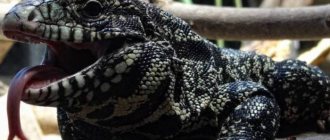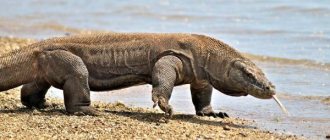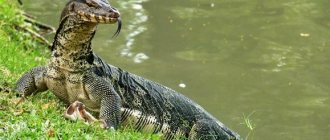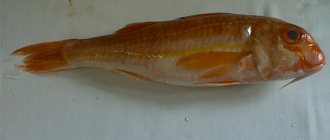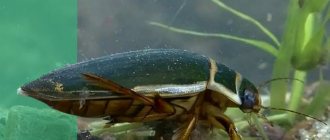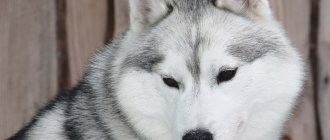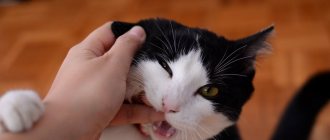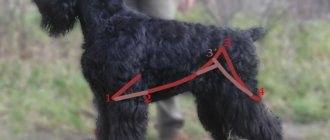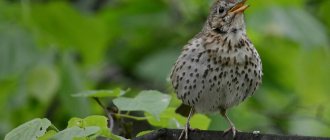Security status
Gray monitor lizard on a Kazakhstan stamp
In the 30-40s. In the 20th century, gray monitor lizard skin was used in the haberdashery industry. In Central Asia and in some years, up to 20,000 gray monitor lizard skins were harvested. This led to a strong reduction in its numbers, and in some places - complete disappearance. Other factors contributing to the extinction of the gray monitor lizard include habitat destruction as a result of economic development of land and the extermination of these lizards by the local population.
Few in number everywhere. Extremely rare in the Fergana Valley and.
The gray monitor lizard is listed in . Also included in the Red Books:
- (1985) - VU status;
- Kazakhstan (1996) - category 2 - species declining in number;
- (2015) - EN status;
- Turkmenistan (1999) - category 2 - species declining in number;
- (2003) - status 2, VU:D.
Interesting Facts
Watch this video on YouTube
- Komodo lizards have powerful immunity against many bacteria. In 2022, a protein compound with antibacterial properties was isolated from the blood of an animal. A substance of similar composition, synthesized in the laboratory, has proven effective against many drug-resistant bacteria and fungi.
- Large monitor lizards feed on carrion. There are known cases when large lizards dug up corpses in cemeteries and ate them. In this regard, in the habitats of giant reptiles, areas with dense soil are used to bury the dead, and heavy stones or concrete slabs are placed on the graves.
- In Central and South America, as well as on the Galapagos Islands, there are iids that are similar in appearance and behavior to monitor lizards. The family of American monitor lizards (tegus, caiman lizards, ameivas) does not belong to the species of South Asia and Australia. Their appearance is a consequence of convergent evolution.
- The skin of giant monitor lizards is quite durable and suitable for processing. Shoes, bags, and belts are made from it. In some countries in Asia and Oceania, lizard meat and eggs are eaten.
Lizards in Central Asia
Komodo dragon
Lizards are the most characteristic and numerous group of reptiles in Central Asia in terms of species and individuals.
They are distributed from deserts below sea level to alpine highlands. Lizards are the main background animals of deserts and semi-deserts.
Lizards are very diverse in appearance; in some the body is compressed laterally; in others it is flattened from top to bottom; in others it is elongated. Many species have large scales on their heads, increasing to the size of scutes. Often on the body and head there are tubercles, spines or other horny outgrowths formed by modified scales.
Most lizards are characterized by a tail that gradually becomes thinner towards the end and noticeably differs in length. Often it is compressed in the horizontal plane. A number of lizards have a prehensile tail that can curl. Many species of lizards have the property of involuntarily breaking off their tail. The fracture occurs along a non-ossified layer across one of the vertebrae. After some time, the tail grows back, but the vertebrae are replaced by a cartilaginous rod. Sometimes the torn tail does not come off completely, but a new one grows back, which is how multi-tailed lizards appear.
These reptiles have good hearing. In most Central Asian lizards, the eardrum is located open on the sides of the head. Some lizards make a dull hiss or snort. Geckos are capable of producing more or less loud sounds - squeaking, clicking, chirping.
The coloration of lizards is very diverse and harmonizes well with the environment. Desert species have a light, sandy color; the inhabitants of dark rocks are brown, almost black. The nature of the pattern can consist of individual, symmetrically located spots, longitudinal or transverse stripes and rings, round eyes and randomly scattered spots and specks. Daytime species of lizards have bright red, blue and yellow tones, while nighttime species are more uniformly colored.
Lizards are characterized by certain features of adaptability in a specific environment. For example, desert species have developed horny ridges on the sides of their fingers, something like sand skis, with the help of which they easily move along the loose surface of the sand. Some Central Asian geckos, which live on a vertical surface, have special extensions with tiny tenacious hairs on the underside of their toes.
Most lizards are carnivores that feed on all kinds of animals. The main food of small and medium-sized species is invertebrates. Larger lizards eat small vertebrates: rodents, birds, frogs, snakes, lizards.
Due to their abundance and very wide distribution, lizards play an important role in biocenoses, eating a huge number of insects, being intermediate hosts of various blood parasites, helminths and ticks, as well as reserve food for birds and mammals. The usefulness of most species of foot-and-mouth and round-headed moths is associated with their habitat in the desert pastures of Uzbekistan and Turkmenistan. The food of lizards is dominated by harmful insects: termites, orthoptera (locusts), homoptera, hemiptera, beetles (click beetles, darkling beetles, pollen beetles, leaf beetles, weevils, etc.), butterfly caterpillars and ants.
It is known that locusts, homoptera and bugs cause great harm in the wormwood-ephemeral semi-desert. Beetles are pests of pasture plants in both the larval and adult phases. Butterfly caterpillars destroy the leaves and tops of wormwood shoots.
Some species of lizards (steppe agama, fast foot-and-mouth disease, gray gecko, yellowbell) live in loess areas on the outskirts of cotton and alfalfa fields and even enter these fields, eating large numbers of beetles, cicadas, bedbugs, locusts, ants, and harmful butterfly caterpillars. The percentage of destruction of beneficial insects is relatively small. All this speaks to the need for every possible protection of these reptiles.
If you find an error, please select a piece of text and press Ctrl+Enter.
Dimensions
Among the numerous species of monitor lizards, there are individuals that differ greatly from each other in appearance and size. Below are comparative characteristics of some representatives of monitor lizards.
| Enter your name | Length, cm | Weight, kg |
| Striped | 250 | thirty |
| Black teeth | 200 | 25 |
| Heterogeneous | 190 | 8,8 |
| Bengal | 175 | 7.2 |
| Golanera | 150 | 5.5 |
| Indian | one hundred | 3 |
| Short tail | 28 year | 0,3 |
| Nano | 25 | 0,2 |
The table shows the average weight and body length of monitor lizards, since living conditions and the availability of sufficient food supply significantly affect the size of individuals.
Is it dangerous for humans?
Varan at home
When confronted with people, the gray monitor lizard takes a threatening position - it inflates its body, which increases its size, makes hissing sounds, opens its mouth wide and extends its tongue, and makes attempts to bite.
He nervously moves his tail from one side to the other and does not give in to his hands. The bites of this large lizard are quite painful, and large individuals can easily bite a human finger. The blow of this reptile's tail is very sharp.
Due to its small size and weight (no more than 5 kg), this lizard simply cannot be deadly, but you should be careful when meeting this predator
Important! The saliva of the gray monitor lizard is somewhat toxic, and its bite can lead to very unpleasant, but not fatal, consequences. Its teeth are sharp and cause deep lacerations, which, in addition to the toxin, can also become infected
Therefore, after a bite from this lizard, the wound should be treated with an antiseptic and be sure to see a doctor.
As a rule, these large lizards try to avoid meeting people, but there are cases of them visiting populated areas
If you don’t try to pick up a wild animal and don’t threaten it with anything, then you don’t have to worry about anything, but you should always exercise caution
These are difficult to tame lizards and only young animals can get used to humans and gradually allow them to approach them.
Captivity
Watch this video on YouTube
Monitor lizards are one of the few reptiles suitable for home keeping. When purchasing and arranging a terrarium, it is necessary to take into account the size of the animal and whether it belongs to a steppe, tree-like or aquatic species.
Thus, the length of the terrarium should exceed the length of the reptile by at least one and a half times, while for desert species it is worth buying horizontal models, for aquatic species - cubic, and for arboreal species - vertical. Tears and stones are placed inside, and sand or small crushed stone is used as soil.
Under natural conditions, most species live in natural areas with a warm climate, so the temperature in the terrarium should be maintained at 28-30 degrees.
Young reptiles are fed daily, from 6-7 months they are given food every other day, and by 1.5 years the number of feedings is reduced to 2 times a week.
The most suitable species for keeping in captivity are spiny, blue-tailed, emerald, Timor, Cape and other medium-sized monitor lizards.
see also: GIRAFFE
Origin of the species and description
Photo: Komodo dragon
Varanus komodoensis is a chordate of the class of reptiles. Belongs to the order Squamate. Family and clan - monitor lizards. The only one of its kind is the Komodo dragon. First described in 1912. The giant Indonesian monitor lizard is a representative of a relict population of very large monitor lizards. They inhabited Indonesia and Australia during the Pliocene period. They are 3.8 million years old.
The movement of the earth's crust 15 million years ago caused the influx of Australia into Southeast Asia. The transformation of the land allowed large Varanids to return to the territory of the Indonesian archipelago. This theory was proven by the discovery of fossils similar to the bones of V. komodoensis. The Komodo dragon actually comes from Australia, and the largest extinct lizard, Megalania, is its closest relative.
In Eurasia, remains of an extinct Pliocene species of lizard similar in size to modern Komodo dragons, Varanus sivalensis, have also been discovered. This proves that giant lizards thrived even in conditions where there was high food competition from carnivores.
Reproduction
Recommended by topic
Cow Lemur Sloth
Monitor lizards do not form permanent pairs or communities, preferring an isolated lifestyle. They become zealous defenders of their territory, into which other relatives are not allowed. They perceive representatives of their own species as potential enemies. Under these conditions, monitor lizards group together exclusively at the time of reproduction to conceive offspring.
They mate in the summer. Between May and August, males try to win females and territory from each other. Brutal fights often end in the death of the opponent. The winner of such a fight begins to court the female and forms a pair with her. In September, females begin to lay eggs.
Question to the expert
How long do monitor lizards live?
Life expectancy depends on the species. Large monitor lizards can live up to 40-50 years if they do not die from natural enemies in the first years of life. Small monitor lizards live up to 10 years, but there are cases when they lived up to 15-20 years.
However, not all females require males in order to produce offspring. For example, Komodo dragons are able to reproduce through parthenogenesis. Females are capable of laying unfertilized eggs without males. The development of male cubs occurs in them.
This method is considered a feature of monitor lizards, allowing them to populate islands where there were no representatives of this genus before. Thus, females who find themselves on deserted islands as a result of storms or tsunamis are able to populate the island with eggs they lay without the participation of males. The breeding season usually coincides with the beginning of the rainy season.
Females choose bushes or caves to form clutches. They protect nests from their relatives and other predators that prey on egg laying.
The incubation period for the development of offspring is about 7-10 months. Different species have different numbers of eggs per clutch. Their number can vary from 10 to 70 eggs.
After the females lay a clutch, they do not return to it and do not take care of the offspring that appear. Newborn lizards show complete autonomy and independence. In the first moments of life, they hide in trees or crevices between stones, trying not to become prey to natural enemies or larger relatives. Monitor lizards reach final sexual maturity by their third birthday.
GRAY MONITOR Varanus griseus
GRAY MONITOR (Varanus griseus) or desert monitor, is widespread in North Africa and South-West Asia east to North-West Pakistan and Balochistan, as well as in the republics of Central Asia and Southern Kazakhstan. The only species that lived within the USSR. It differs from all other members of the family by its tail, which is round in cross section and lacks the narrow longitudinal keel on top that is characteristic of other species. Its nostrils in the form of oblique slits are located closer to the front edge of the eye than to the end of the muzzle, which also distinguishes this lizard from most other monitor lizards. On top it is grayish or reddish-brown in color with numerous dark specks and spots, among which there are brown transverse stripes at regular intervals across the back and tail. The animal reaches a length of 160 cm including the tail, with a weight of up to 2.5 kg, thus being the largest lizard living in the country of the former USSR. In Central Asia, the gray monitor lizard lives in sandy deserts, adhering to more or less fixed sands, but is also found in rocky foothills, in tugai forests and near cliffs along river banks. Its shelters are the burrows of various rodents - gophers and large gerbils, which it specially widens and deepens. The length of the burrow reaches 2–2.5 m and ends in an expanding chamber up to 0.5 m long and 10–12 cm wide. Monitor lizards often dig holes for themselves up to 4 m long or more. The movements of the gray monitor lizard are fast. It runs at a speed of 100-120 m per minute, raising its body high on splayed legs and not touching the ground with its tail. However, with such speed the animal can only move for a short time, and a person can easily catch up with this lizard. Monitor lizards climb low trees and bushes and can jump from a height of up to half a meter. When meeting a person, the monitor lizard greatly inflates its body, causing it to become wide and flat, hisses loudly, sticks out its tongue and, opening its mouth wide, tries to bite. He lashes his tail forcefully left and right, not allowing himself to be controlled. Its bites are quite painful, and large lizards are able to bite a person’s finger. The gray monitor lizard feeds on a variety of animal foods: it eats insects, scorpions, phalanges, lizards, snakes (including poisonous ones), young turtles, birds, rodents, and in the spring also bird and turtle eggs. In search of food, the monitor lizard makes long journeys every day, moving up to half a kilometer from the shelter. He usually walks along one route, examining oncoming colonies of gerbils, turtle burrows, bird nests, and often spends the night where he is caught in the dark. Sexual maturity in this species apparently occurs no earlier than the third year of life, when it reaches 60-80 cm in length. In Central Asia, mating occurs in May, and already in the first half of June, females lay eggs, burying them deep in the sand or leaving them in the depths of burrows. Young females lay 8-15, and older ones - up to 23 eggs, reaching 45-55 mm in length and 28-34 mm in width and weighing up to 15 g. The young hatch from the eggs after 3-3.5 months, in September . In Central Asia and Kazakhstan, gray monitor lizards spend the winter hibernating in the depths of their burrows, closing the entrance hole with an earthen plug. Of the enemies of the gray monitor lizard, perhaps the most dangerous is man, who until recently exterminated thousands of these lizards for their skin, suitable for making haberdashery and shoes. In some years, up to 20 thousand monitor lizard skins were mined in Central Asia and Kazakhstan, and it is not surprising that in a number of places it was almost completely destroyed. Currently, the extermination of monitor lizards is prohibited by law.
Appearance of black monitor lizards
Externally, black monitor lizards are similar to emerald monitor lizards, but are much larger in size. The bodies are slender, the limbs are thin, so these monitor lizards look lanky.
The length including the tail can reach 90 centimeters. The structure of these monitor lizards reflects their way of life: they have a slender build, a long neck, and a medium-sized head. The teeth of black monitor lizards are sharp and long; with their help, monitor lizards grab prey among dense vegetation.
Black monitor lizard (Varanus beccari).
The fingers are thin and long, they end in needle-sharp claws, they help monitor lizards to hold onto tree branches. The monitor's tail is twice as long as its body, it is tenacious and adapted to grab onto branches, that is, in fact, it is an additional paw.
Juveniles are light in color, with markings across the body, but with age the color becomes jet black. Black monitor lizards look especially beautiful in bright terrariums.
Security status
In the 30–40s of the 20th century, the skin of the gray monitor lizard was used for the manufacture of haberdashery products. All this contributed to the gradual disappearance of these exotic amphibians. In addition, as a result of economic and production activities and the development of new land plots, this phenomenon has intensified.
Sometimes monitor lizards are destroyed intentionally, simply because of old prejudices. There are many negative folk signs associated with it. Thus, one of the prejudices in Asia is that if you meet a monitor lizard, it will mean illness, and if it slips between a man’s legs, it will take away his virility.
Moreover, in Asia it was unfairly believed that these lizards suck milk from domestic animals. All this is far from the real facts, but this reptile is not loved and is often killed. The population is decreasing all the time. Therefore, the Central Asian gray monitor lizard was listed in the IUCN Red List.
In addition, it is included in the Red Books and is protected by the following countries:
- Kyrgyzstan;
- Kazakhstan;
- Tajikistan;
- Turkmenistan;
- Uzbekistan.
The Central Asian gray monitor lizard is a rare and large lizard that inhabits the deserts and semi-deserts of Central Asian countries. For a long time he simply hibernates. When active, it can move quickly, is a successful hunter of poisonous snakes and can cause harm to humans, but not fatally.
The wound after a bite should be treated, and then consult a doctor.
What does the Nile monitor eat?
Photo: Nile monitor in nature
Nile monitor lizards are predators, so they can hunt any animal that they have the strength to handle. Depending on the area, age and time of year, their diet may vary. For example, during the rainy season these are mostly mollusks, crustaceans, amphibians, birds, and small rodents. During the dry season, carrion predominates on the menu. It has been noticed that monitor lizards often commit cannibalism, but this is characteristic not of young, but of adult individuals.
Interesting fact: Snake venom does not pose a danger to these reptiles, so they successfully hunt snakes.
Young monitor lizards prefer to eat mollusks and crustaceans, while older monitor lizards prefer arthropods. This preference in food is not accidental - it is caused by age-related changes in the structure of the teeth, as over the years they become wider, thicker and less sharp.
The rainy season is the best period for Nile monitor lizards in terms of obtaining food. At this time, they hunt with great enthusiasm both in water and on land. During drought, lizards most often lie in wait for their potential prey near a watering hole or simply eat various carrions.
Interesting fact: It happens that two monitor lizards team up to hunt together. The role of one of them is to distract the attention of the crocodile guarding its clutch, the role of the other is to quickly destroy the nest and run away with the eggs in its teeth. Monitor lizards also use a similar model of behavior when destroying bird nests.
Now you know what to feed the Nile monitor lizard. Let's see how he lives in the wild.
Gray monitor lizard
In nature, gray monitor lizards inhabit various types of deserts and semi-deserts, such as sandy, clayey, loess and rocky. These animals are found on coastal cliffs, in tugai forests, periodically entering lands cultivated by humans. Reptiles are active during the day and live in specially constructed burrows in which a certain microclimate is created. Monitor lizards themselves dig a hole or expand an existing one, which belonged to some rodent, after having eaten the owner. The depth of the dwelling can reach up to 4 meters in depth. In it, the reptile rests, hides from enemies and spends the winter months in hibernation, having previously plugged the entrance with an earthen plug. These lizards leave their shelters every day after the heat subsides, both to walk around their territory and to hunt, moving away from sometimes a kilometer away. The animal moves slowly, but, escaping from pursuit, it can develop great speed, although only for short distances. If the monitor lizard cannot unite, escape, or is caught by surprise, then it immediately takes a stance - opens its mouth wide, sticks out its tongue, hisses loudly and lashes its tail in different directions, its body swells and becomes wide and flat. The Arabs are afraid of this animal because it is both bolder and angrier than all other lizards that are common in their country. If you frighten this reptile in an open area, then in seconds it prepares for defense, jumps 1 meter in height with the help of its tail and rushes to a person’s face or chest, and to large animals on the belly, while it inflicts severe lacerations on camels and horses and donkeys. Gray monitor lizards eat almost everything they can find, including small mammals, birds and reptiles. The diet of young animals includes insects. Adult animals eat gerbils, mice, gophers, hedgehogs, all kinds of lizards, small turtles, frogs and the like. Monitor lizards simply lick small prey with their tongue, and eggs, chicks and slow-moving animals are strongly squeezed by their powerful jaws and quickly swallowed. The reptile chases large prey, then, having caught it, quickly shakes it, presses it to the ground, strangles it and swallows it. Scientific sources contain information that the gray monitor lizard copes even with a rattlesnake and a cobra. When bitten by the described reptile, saliva enters the wound of the victim, which carries a huge amount of bacteria and microorganisms, which has strong toxic properties. When a person is bitten, his temperature rises, headache, nausea appear, and in advanced situations, severe suppuration of the wound and even sepsis. Small animals, such as sparrows or rats, when administered as an intramuscular injection of monitor lizard saliva, after some time stop moving and die. Animals usually obtain the required amount of moisture from food, but if the reptile has such an opportunity, then it will gladly drinks water, bathes and catches fish or crabs. While drinking, the monitor lizard dips its head up to the eyes into the pond, collects liquid in its mouth, and, lifting it up, swallows. Adult gray monitor lizards have practically no natural enemies. But young lizards often become victims of large birds of prey and honey badgers, and they can also be eaten by a larger individual of their species.
Features of behavior of black monitor lizards
Newly acquired black monitor lizards can be shy. It will take time to adapt. It is recommended to have your pets checked by a herpetologist for bacteria and parasites.
Long travels have a negative impact on the state of monitor lizards; they develop stress. They often arrive in poor condition.
Varanus becarri is also known as the Black Tree Monitor or Aru Islands Monitor.
The animal must have access to clean water. The terrarium is regularly sprayed to replenish moisture in the monitor lizard’s body.
During defense, monitor lizards bite, scratch, and defecation is also a defensive reaction for these animals. It is worth noting that monitor lizards have sharp teeth and claws. They do not use their tail, unlike other species, as a defense mechanism, although their brothers can successfully fight off with their tail.
Over time, black monitor lizards get used to the environment of the terrarium, even allowing themselves to be stroked and picked up.
In nature, thermoregulation in Black monitor lizards occurs due to basking in the sun.
What else is worth knowing
Everyone knows that there are many people who like to keep exotic animals at home. No one keeps gray monitor lizards in apartment conditions, because they require special care. And only the person who knows the physiological characteristics of this lizard by heart can provide it.
Interestingly, Muslims are wary of gray monitor lizards. Their name in Turkic sounds like “kesel”. This word is translated as “disease”. And people believe that meeting a monitor lizard promises misfortune.
At one time, these creatures were on the verge of extinction. Many found the skin of monitor lizards unusually beautiful, which is difficult to disagree with. In addition, it is very durable. And monitor lizards were killed en masse to make shoes, wallets, bags and other accessories from their skins. At the beginning of the 20th century, 20 thousand individuals were destroyed per year. Then people realized what a horror they were committing and stopped killing these creatures. This is encouraging, although there are not as many representatives of the species left as before - in some places monitor lizards have already become extinct.
Among the many species of reptiles, a special place is occupied by such representatives of this class as monitor lizards. Monitor lizards are a type of lizard, most of them quite large in size.
The most famous, of course, is the legendary monitor lizard from Komodo Island, also called the Giant Indonesian monitor lizard or Komodo monitor lizard. It is the largest member of the monitor lizard family and can exceed three meters in length and weigh more than one hundred and fifty kilograms.
Fortunately, quite a lot has already been said about this powerful animal, so we will turn our attention to the Central Asian gray monitor lizard, which is the largest lizard living in the territory of the former Soviet Union. The Central Asian gray monitor lizard is a subspecies of the gray monitor lizard and is distributed throughout Central Asia
In Turkmenistan they call it “zem-zem”. The largest lizard in the Central Asian region
The Central Asian gray monitor lizard is a subspecies of the gray monitor lizard and is distributed throughout Central Asia. In Turkmenistan they call it “zem-zem”. The largest lizard in the Central Asian region.
Setting up a terrarium for black monitor lizards
When purchasing or building a DIY Black Monitor terrarium, you should pay more attention to height than length.
Much attention is paid to the height and length of the terrarium. It is better to use a vertical type terrarium so that monitor lizards can climb and climb branches. A pair of black monitor lizards are kept in a terrarium measuring 150 by 75 centimeters with a height of 75 centimeters.
Black monitor lizards have a rather nervous nature and often prefer to remain in cover, especially while they are acclimatizing. Therefore, the terrarium is filled with vegetation. You can also use artificial leaves.
You should place driftwood and branches in the home of black monitor lizards on which they can climb. Adaptation is uneven; some individuals begin to actively move around the terrarium, while others remain nervous. Shelters are made not only below, but also among the branches, in the upper part of the home.
Remember that monitor lizards will feel much more comfortable in a vertical terrarium.
Shelters should be well reinforced, but easily removable if necessary, since they will sometimes need to be removed and cleaned. Or get eggs out of them, if you’re lucky, and the monitor lizards will lay a clutch.
It is good to use pine mulch as a substrate; flower soil, leaves, sphagnum or mixed soil are also suitable. A good option would be pine chips, which hold moisture well. In general, the humidity in the terrarium should be quite high, so it needs to be sprayed regularly.
